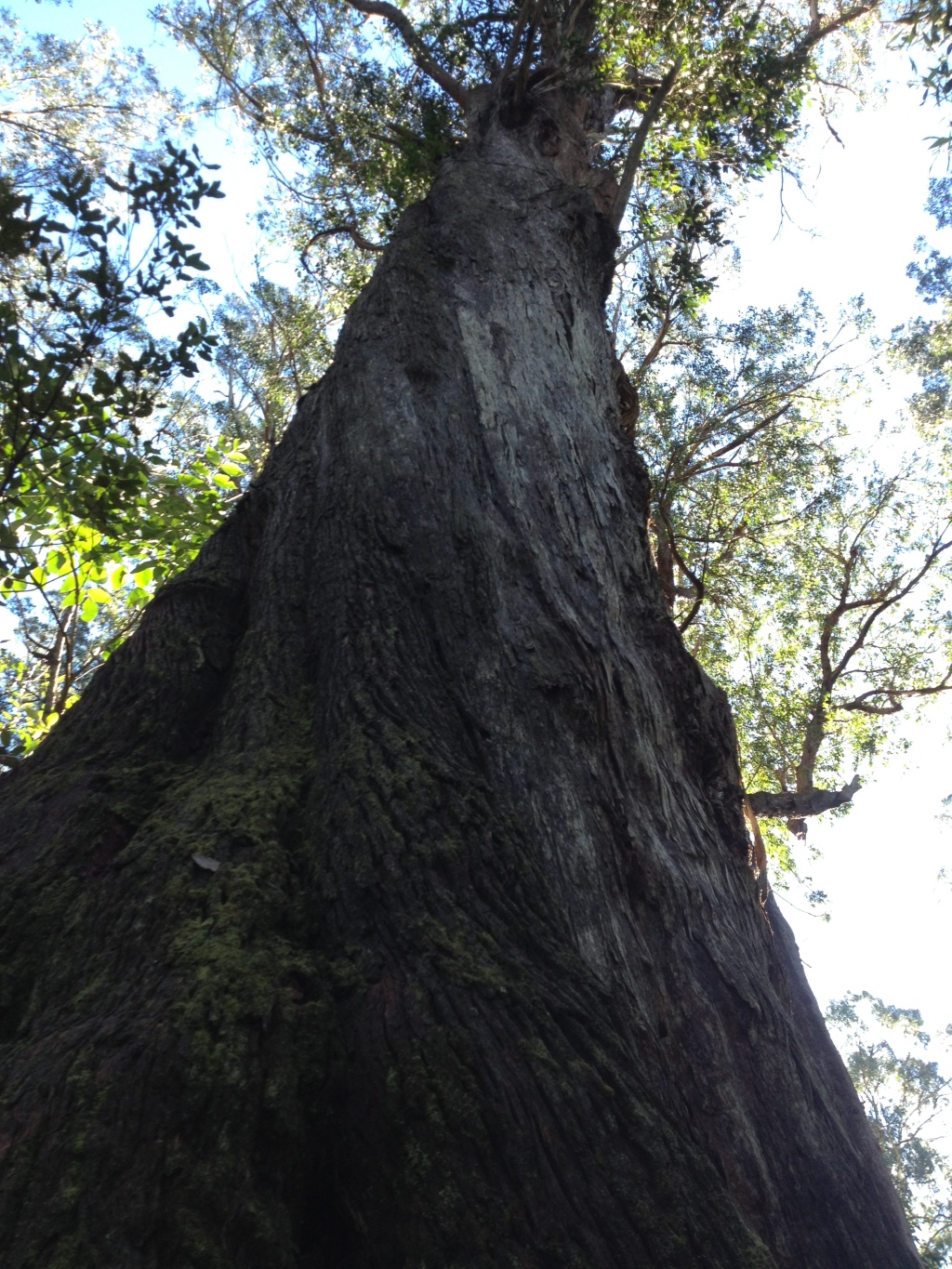Eucalyptus fastigata
H.Deane & Maiden Brown-barrelTypicall a tall, straight tree to c. 60 m tall, often buttressing at base; bark fibrous to stringybark-type, extending to lower branches or nearly so, shedding in long ribbons. Juvenile leaves petiolate, opposite for few pairs then alternate, ovate to broadly lanceolate, oblique, held somewhat horizontally, to c. 15 cm long, 9 cm wide, glossy, green; adult leaves petiolate, alternate, lanceolate, 8–15 cm long, 1.5–3 cm wide, concolorous or slightly discolorous, glossy, green; reticulation sparse, with numerous island oil glands. Inflorescences axillary, often paired, unbranched; peduncles to 1.4 cm long, 9–15-flowered; buds pedicellate, clavate, to 0.6 cm long, 0.3 cm diam., no scar (single operculum); operculum conical, often apiculate; stamens irregularly flexed; anthers dorsifixed, reniform; ovules in 2 vertical rows; flowers white. Fruit pedicellate, obconical or pyriforrm, to 0.8 cm long, 0.7 cm diam.; disc flat or slightly raised; valves 3, rim level or slightly excerted; seed brown, glossy, smooth, pyramidal but distorted by one curved face, hilum terminal.
GipP, EGL, EGU, HNF, MonT, HFE. Also NSW. In Victoria restricted to the Errinundra Plateau and closely surrounding area, south-east from Bonang to north of Combienbar. A record from mountainous country on the upper Murray River tributaries requires verification.
Differing from E. regnans chiefly in the rough bark which covers the whole trunk, slightly smaller buds and fruit, disc of the fruit which is slightly domed, and much more restricted and easterly distribution in Victoria.
Brooker, M.I.H.; Slee, A.V. (1996). Eucalyptus. In: Walsh, N.G.; Entwisle, T.J., Flora of Victoria Vol. 3, Dicotyledons Winteraceae to Myrtaceae, pp. 946–1009. Inkata Press, Melbourne.
 Spinning
Spinning


